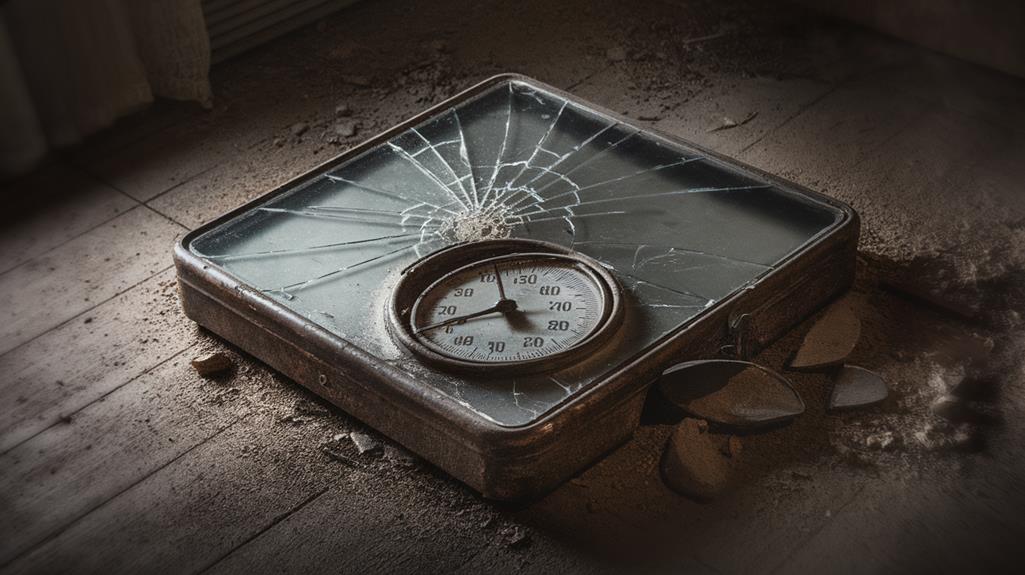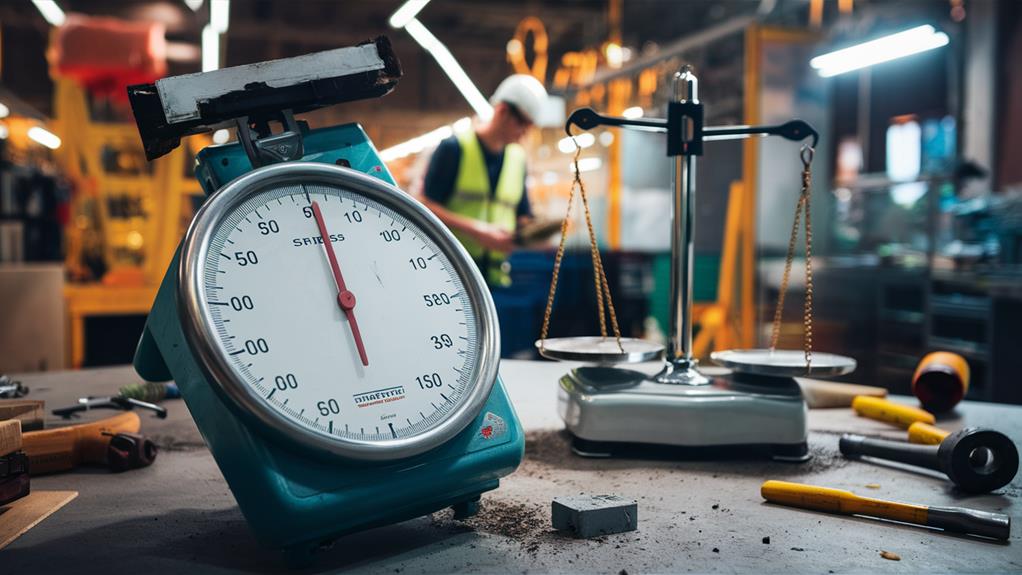
Scale Break Signs: Powerful Messages & Spiritual Meanings Guide
As you ponder the meaning behind your broken scale, consider that it’s a sign to re-evaluate your relationship with measurement and worth, a reminder to look beyond numbers and focus on the qualities that truly add value to your life. A broken scale often indicates neglect or harsh conditions, such as rust and corrosion, which can accelerate wear and cause inaccurate readings. Replacing it with a quality scale made from durable materials can lead to long-term cost savings and improve operational efficiency, but it’s likewise crucial to recognize the emotional impact of inaccurate readings on your self-perception and lifestyle, and how a simple change can shift your perspective.
Key Takeaways
- Inconsistent readings or unusual error messages may indicate a broken scale requiring immediate inspection and repair.
- Environmental factors like rust, corrosion, or extreme temperatures can contribute to scale damage and inaccuracy.
- Fluctuating weight readings in electronic scales often signal malfunctions due to static or temperature changes.
- A broken scale can negatively impact operations and compromise the bottom line, emphasizing the need for prompt replacement.
- Regular maintenance, calibration, and inspections can help prevent scale damage and ensure accurate readings.
Understanding Scale Lifespan
As you contemplate investing in industrial scales, understanding their lifespan is crucial for maximizing your return on investment. The longevity of these tools is influenced by factors such as usage frequency, environmental conditions, and the level of maintenance applied.
You’ll want to reflect on these factors when choosing between types of scales, as some will be more resilient than others in various settings.
Regular calibration is critical for extending the lifespan of scales and ensuring their accuracy. Annual or bi-annual checks will help you avoid inaccurate readings that can impact your business.
Moreover, environmental factors like rust and corrosion can greatly accelerate wear, making regular inspections important, especially in harsh conditions.
Identifying Signs of Damage
When evaluating your industrial scale’s condition, inconsistent readings on its display often signal the need for closer inspection. Inconsistent readings can indicate potential mechanical or load cell issues, suggesting the need for calibration or repair if known weights yield varying measurements.
You may notice fluctuating weight readings, particularly in electronic or digital scales, which may point to electronic malfunctions caused by static buildup or changes in ambient temperature. If your scale displays error messages or fails to turn on, it may require resetting or troubleshooting to address potential battery issues or calibration needs.
Regular inspections for rust and corrosion are crucial, especially in damp or corrosive environments, as visible signs of wear can greatly affect a scale’s accuracy and functionality. Look for signs of wear, such as burned-out display sections that can impair visibility.
While changing batteries might resolve this issue, persistent problems could be a sign that your scale is broken and on the path to becoming a non-functional relic. A broken scale is more than just an inconvenience – it can compromise your operations and impact your bottom line.
Replacing Industrial Scales

Replacing an industrial scale requires careful evaluation of your operational needs to guarantee the new scale meets specific requirements. Assess your needs for weight capacity and accuracy, and research advancements in scale technology to identify features that boost efficiency and user experience.
Comparing different types of scales is crucial, as various models are used to measure distinct elements – from heavy machinery to precise ingredients. Engaging with manufacturers that provide customization options can improve the functionality of new scales, tailoring them to specific industry needs and applications.
As you weigh your options, keep in mind that budgeting for return on investment is critical – selecting high-quality scales can lead to long-term savings through reduced maintenance costs and increased operational efficiency.
With so many factors to evaluate, choosing the right scale can seem overwhelming. Yet, by carefully assessing your needs, you’ll be well on your way to selecting a scale that not only meets but exceeds your expectations.
Benefits of Quality Scales
By investing in high-quality scales, you’ll be able to reap numerous benefits that improve your operations and contribute to your bottom line. Scales made with durable materials improve their longevity and reliability, reducing the need for frequent replacements and maintenance. This not only saves you time but likewise money, as you won’t have to constantly worry about scale failures and the resulting downtime.
The benefits of quality scales extend beyond the physical domain, influencing your entire business ecosystem. Here are just a few ways high-quality scales can positively impact your operations:
- Precise measurements guarantee accurate weight readings, which is vital for industries that require strict compliance and operational efficiency.
- Long-term cost savings can be achieved through lower maintenance expenses and reduced inaccuracies that could result in costly operational errors.
- Customization options allow businesses to tailor features to their specific needs, guaranteeing peak performance in various environments and applications.
Consequences of Inaccurate Readings
Faulty scales can have far-reaching consequences for your health and well-being. Relying on inaccurate readings from commonly used scales can lead to misinterpretation of your weight and health status, resulting in poor lifestyle choices and potential health risks.
You may neglect critical warning signs, such as significant weight loss or gain, that may indicate underlying health issues. As you become accustomed to inaccurate readings, you can develop a distorted perception of progress in health and fitness. This can lead to chronic dissatisfaction and possible psychological effects like depression and low self-esteem.
Moreover, inconsistent readings can result in overexertion, as you may push your limits based on erroneous data, leading to bodily injuries and exhaustion. It’s crucial to be aware of these consequences and take corrective action.
Invest in quality scales that provide accurate readings, and consider alternative methods of tracking your health, such as body fat percentage or overall well-being. By doing so, you can encourage a healthier relationship with fitness and health, focusing on progress rather than fixation on inaccurate metrics.
Frequently Asked Questions
What to Do if Your Scale Is Broken?
You’re looking for ways to track your weight, but your scale’s not an option. Consider using alternative methods or scale alternatives to stay on top of your fitness motivation and maintain consistent weight tracking.
How Do You Tell if Your Scales Are Broken?
You check scale accuracy by comparing weight consistency across multiple readings. If they vary, you may need to try different calibration methods to guarantee reliable measurements from your scale.
What Is the Measurement With a Broken Scale?
When relying on weight accuracy, you expect precise numbers. Nevertheless, a digital malfunction can occur, and you’ll get incorrect readings. Check calibration tips to guarantee your scale is working correctly, as faulty calibration can distort results.
What Is a Broken Scale in Music?
When you think about a broken scale in music, consider the concept of scales in musical intervals and theory, where a broken scale often refers to an instrument or vocalist not accurately hitting correct notes within standard tuning systems.




